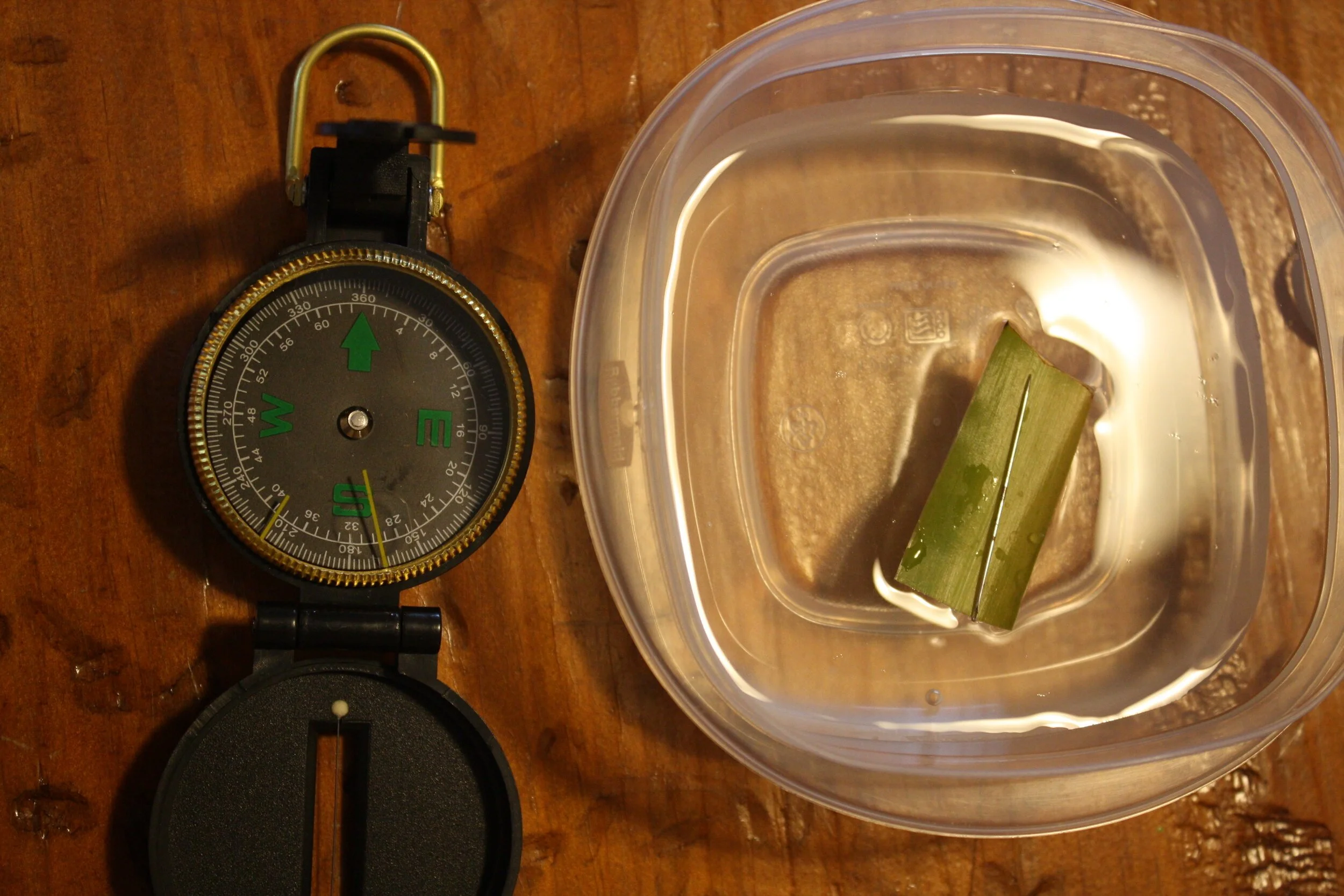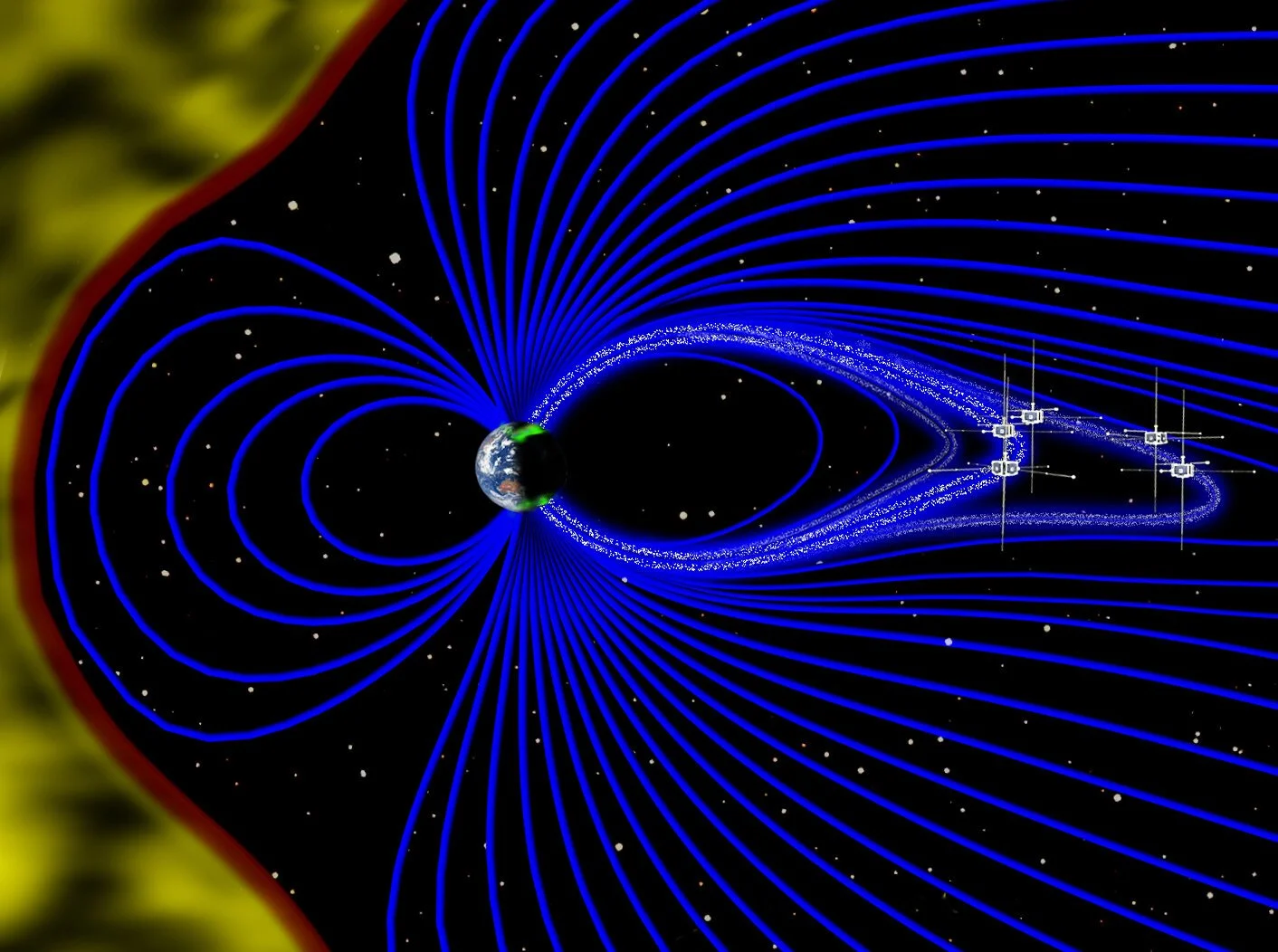At-home STEM Activities: DIY Compass (We're going on a 'vacation' adventure...)
For New Hampshire’s April school vacation week, when none of us is actually going anywhere, we decided to focus on things we could do if we did have some sort of wild vacation adventure and ended up on a deserted island- how could we problem-solve our way through being stranded and get back home again?
We’ll start by making a compass from materials we (hopefully) have lying around so that we can find north and the other cardinal directions- this is a pretty quick activity that touches on our magnetic field and the Earth’s core.
To make a compass you will need the following:
-a sewing needle or pin
-a magnet (from your fridge works well)
-a plant leaf that is big enough to support the needle/pin
-a small dish of water
1. Place the needle/pin against the magnet and pull it across the surface several times in the same direction
2. Place the needle/pin on the leaf and lay gently on the water in your dish- the leaf will spin until the end of the needle/pin points north!
*You may notice that the needle does not exactly line up with the north-south line of the compass in the picture- because it is so light, any nearby magnetic field can influence the orientation of the needle- my computer, the fridge magnet, etc.- so it’s best to clear a good space around the water.
Don’t have a magnet? Rub the needle or pin against your jeans or a similar fabric to build up a static charge.
Living in a cold climate when green leaves are hard to find outside? You can use a variety of materials that float on water; for example, wax paper. I used a cutting from a house plant and also tried it with a small square of parchment paper- both worked well, although the parchment curled a little as it absorbed water, so be ready for that.
*If you are using any kind of paper, put a small crease in it for the needle/pin to lie in- I didn’t the first time around and it rolled right off into the water.
What happened here?
By pulling the needle or pin across the surface of the magnet, we gave it a magnetic charge- once the leaf was on the water and could turn freely, the magnetic charge wanted to orient itself in line with the Earth’s magnetic field. Rubbing the needle or pin against the jeans built up static electricity, and electrical currents also have a magnetic charge- once again, the charged needle wanted to line up with the Earth’s magnetic field.
What is the Earth’s magnetic field?
The Earth has a magnetic field extending from within its core out into space- like any magnet we might use in our daily lives, the loops of the Earth’s magnetic field travel out from the North pole and then curve back in toward the planet’s interior at the South pole. Crazily enough, Earth’s geographic North pole is currently home to the magnetic South pole, so that the loops of the field push out from the planet in Antarctica and come back down in the Arctic. When we use a compass in the Northern Hemisphere, the needle is pointing to the magnetic South pole.
Our magnetic field extends out thousands of miles into space where it touches particles streaming from the sun, the solar wind. If you have ever seen the aurora borealis, you’ve witnessed those solar particles following the lines of Earth’s magnetic field down into the atmosphere where they interact with electrons. In addition to channeling these solar particles, the magnetic field also protects us from cosmic radiation.
Image showing Earth’s magnetic field from NASA.gov
Our magnetic field is generated within the planet’s core- as heat from the solid inner core is transferred to the molten iron layer above it, convection in the iron layer generates electrical currents which have magnetic charges. The orientation of the magnetic field is not constant- on average over the last few decades, the location of the magnetic poles has shifted 35 miles each year, and the poles have reversed position hundreds of times in the records we have going back 3 billion years.





